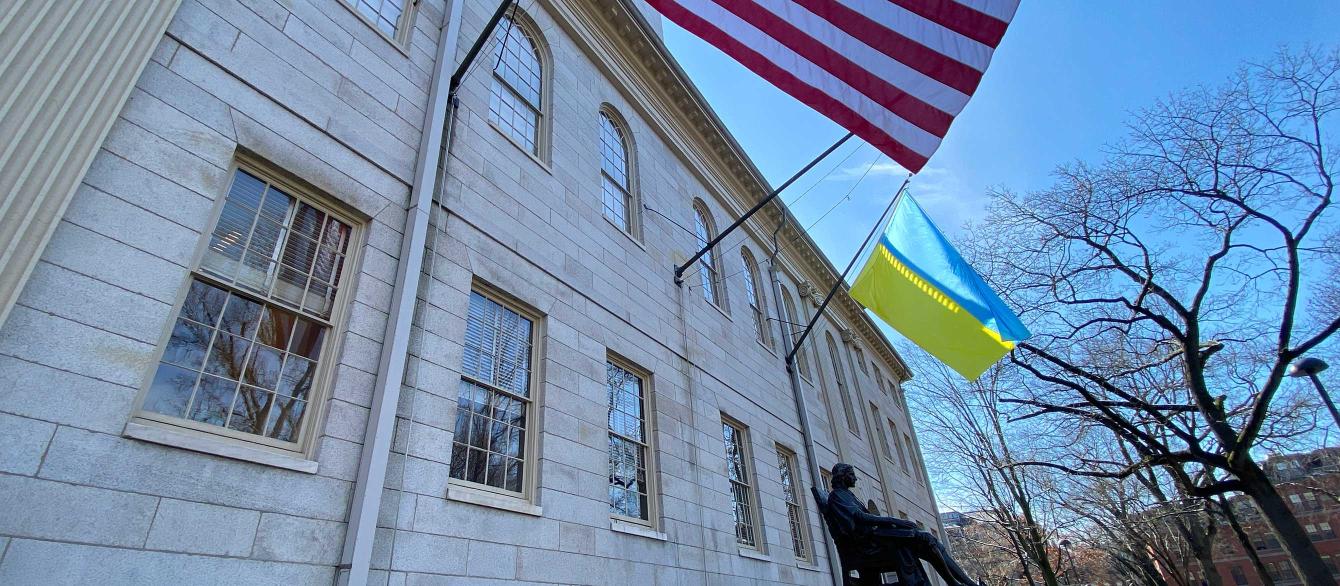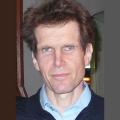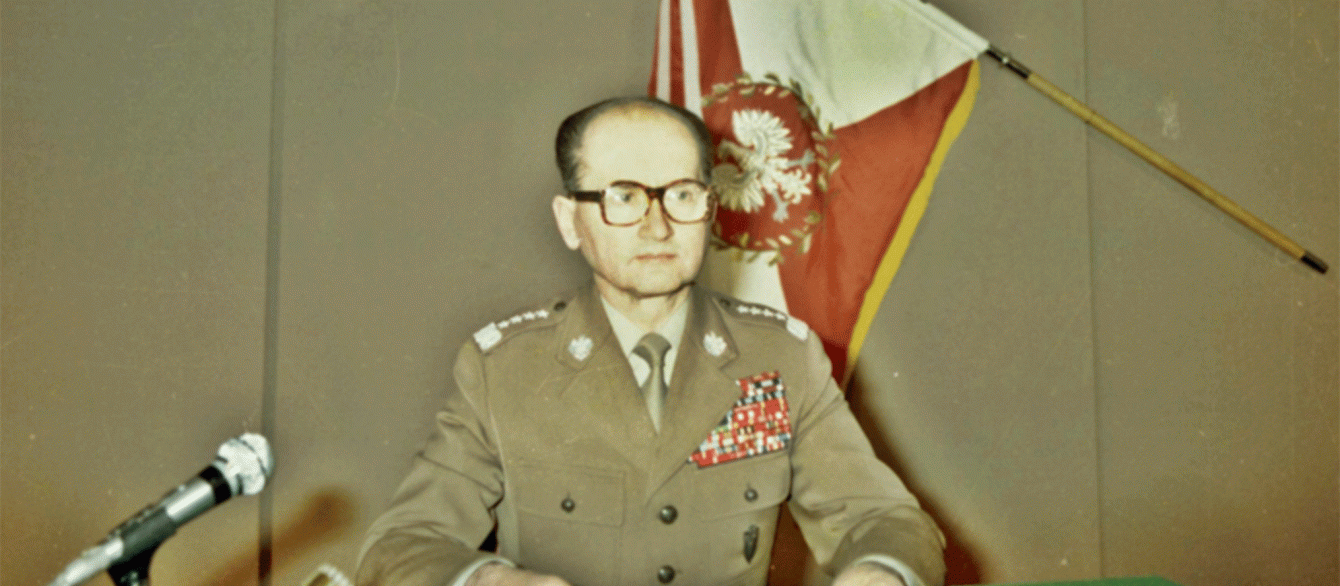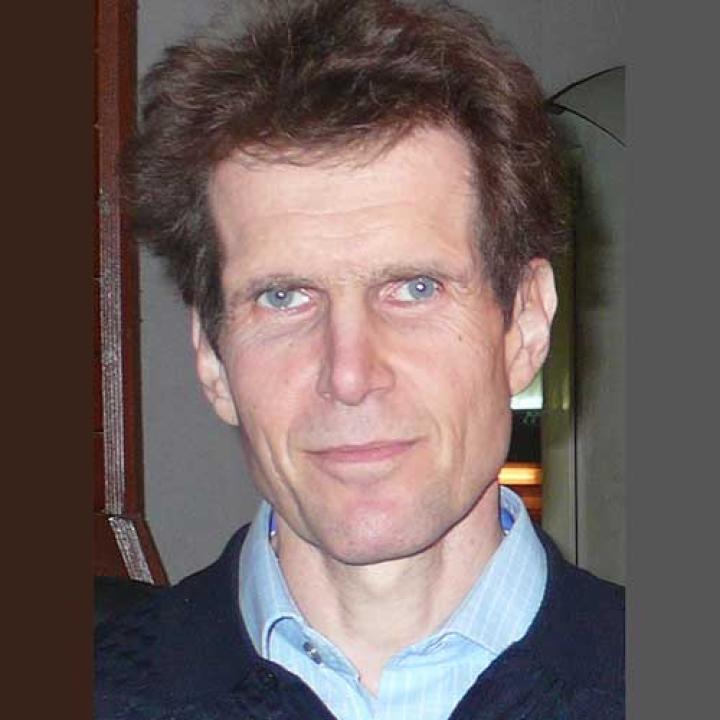This month has witnessed commemorations of the 40th anniversary of the imposition of martial law in Poland in December 1981 and the 30th anniversary of the disintegration of the Soviet Union in December 1991. Those two events marked the beginning and the end of the final decade of the Cold War. Juxtaposing the two anniversaries helps us understand the enormous changes that can happen in international relations in a brief period of time.
Repressive Crackdowns in the Soviet Bloc
In December 1981, after General Wojciech Jaruzelski launched a military crackdown in Poland, the political outlook in that country and the rest of the Soviet bloc was grim. Polish security forces, backed by the Polish army, swiftly crushed the free trade union Solidarność, which had been functioning as a de facto alternative center of power in Poland since the late summer of 1980. Overnight, sixteen months of nascent democratization in Poland under Solidarność came to a decisive end.
In other Warsaw Pact countries as well, Communist dictators stepped up the use of force and repression in the early 1980s. The ruling Politburo of the Communist Party of the Soviet Union (CPSU) ordered the Soviet State Security Committee (KGB) to subdue the small dissident movement in the USSR, which had been seeking improvements in human rights. By the end of 1981, every prominent figure in the Soviet dissident movement had been either imprisoned or forced into exile. The KGB violently disbanded the Moscow Helsinki Group, which had been set up to monitor Soviet compliance with humanitarian provisions of the Helsinki Final Act signed by the Conference on Security and Cooperation in Europe (CSCE) in mid-1975. Over the next few years, the KGB and the CPSU Propaganda Department clamped down severely on anyone in the mass media, academia, or other professions who expressed even the slightest deviation from official views.
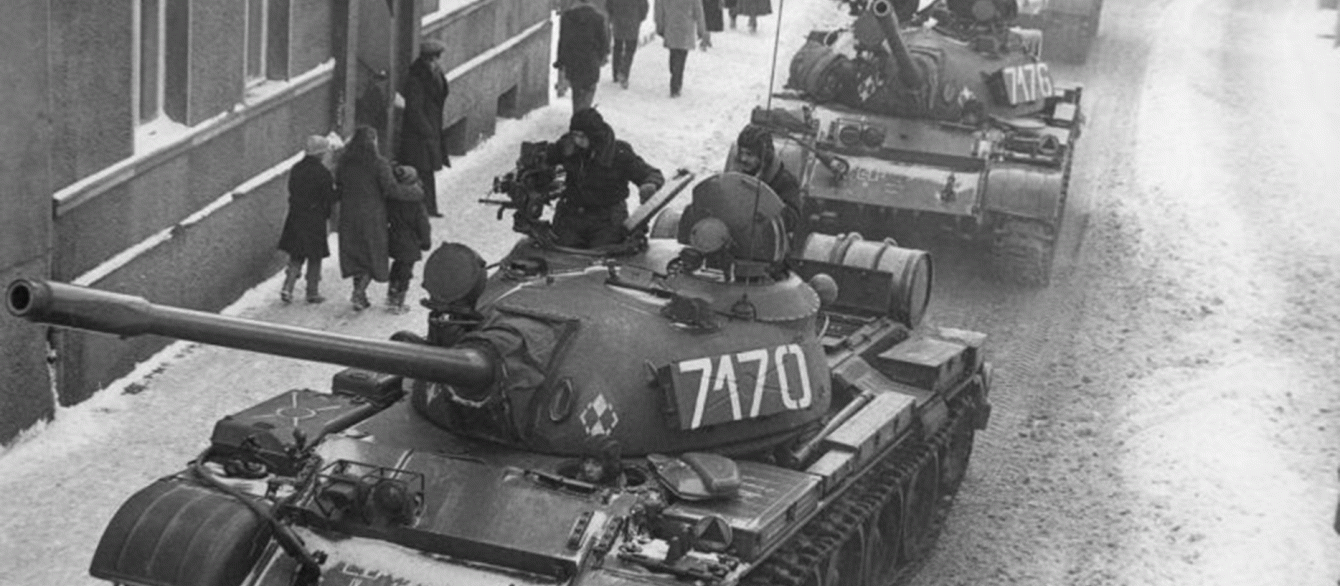
Polish T-55 tanks enter the town of Zbąszyń while moving east towards Poznań, 13 December 1981.
Much the same was true in all the East European countries allied with the USSR. The state security organs in those countries worked closely with the Soviet KGB to establish tight social control and get rid of small numbers of dissidents who advocated human rights and democratization. Especially harsh were the restrictions imposed by Communist authorities in Czechoslovakia, East Germany, and Romania, where even minuscule hints of dissent incurred a wrathful and overwhelming response.
Overnight, sixteen months of nascent democratization in Poland under Solidarność came to a decisive end.
By the early 1980s, any concerns the Soviet and East European governments had about the small dissident movements in their countries had been alleviated. Orthodox Communist rule was firmly in place in every Warsaw Pact country, and Western groups that had been pushing for improvements in human rights in the Soviet bloc through the CSCE process had essentially lost all hope.
The martial law crackdown in Poland in December 1981 not only signaled a new phase of domestic repression but also came amid a sharp escalation of the Cold War. A decade earlier, U.S.-Soviet relations had undergone a significant but short-lived improvement with the détente policies adopted by U.S. President Richard Nixon and Soviet leader Leonid Brezhnev. But tensions began resurfacing in the latter half of the 1970s, and by the end of the decade, when Soviet troops invaded Afghanistan, the relationship had broken down altogether. U.S.-Soviet ties continued to deteriorate after Ronald Reagan was elected U.S. president in November 1980. By then, acrimony and hostility pervaded every aspect of superpower relations.
Many experts in the West were worried at the time about how events would develop. Robert Gilpin, a distinguished scholar of international relations (IR) theory at Princeton University, wrote pessimistically in the 1981 edition of his classic text War and Change in World Politics about what he saw as the steady decline of the United States and the likely ascendance of the Soviet Union and other Warsaw Pact countries:
Although the United States continues to be the dominant and most prestigious state in the [international] system, it no longer has the power to “govern” the system as it did in the past. …The classic symptoms of a declining power characterize the United States in the early 1980s. . . . The Soviet Union is, of course, the rising challenger, and it appears to be the one power that in the years to come could supplant the American dominance over the international system. . . . [T]he acceleration in the development of Soviet industrial and military might in recent decades has been formidable. … Meanwhile, the relative decline in American power and the continuing restraint [in Washington] on the use of military force has [sic] given rise to an era of uneasy coexistence between the superpowers. … The redistribution of military power in favor of [the USSR] as the rising state in the international system …might precipitate a course of events over which [the superpowers] could lose control.
The world of December 1981, which had seemed so disheartening for supporters of human rights, democracy, and freedom, had changed fundamentally for the better within just a decade.
Gilpin, a leading proponent of the realist school of IR theory, was hardly the only commentator at the time who expressed deep misgivings about U.S. foreign policy, the projected rise of the Soviet Union, and the future of the Cold War. The successful imposition of martial law in Poland, the ongoing wave of repression in other Soviet-bloc countries, the gains achieved by Soviet military forces in distant Third World countries, and the comprehensive Soviet military buildup were repeatedly cited by Western commentators who worried that the Cold War might be taking an ominous turn.
The rapid succession of leadership changes in the CPSU starting with Brezhnev’s death in November 1982 gave further reason for pessimism. Brezhnev was replaced by Yurii Andropov, the long-time head of the KGB, whose tenure as General Secretary of the CPSU was notable for intensified repression at home and hardline policies abroad. But Andropov died of kidney failure in February 1984 and was replaced by a Brezhnev protégé, Konstantin Chernenko, whose 13-month tenure in office was mostly a holding pattern.
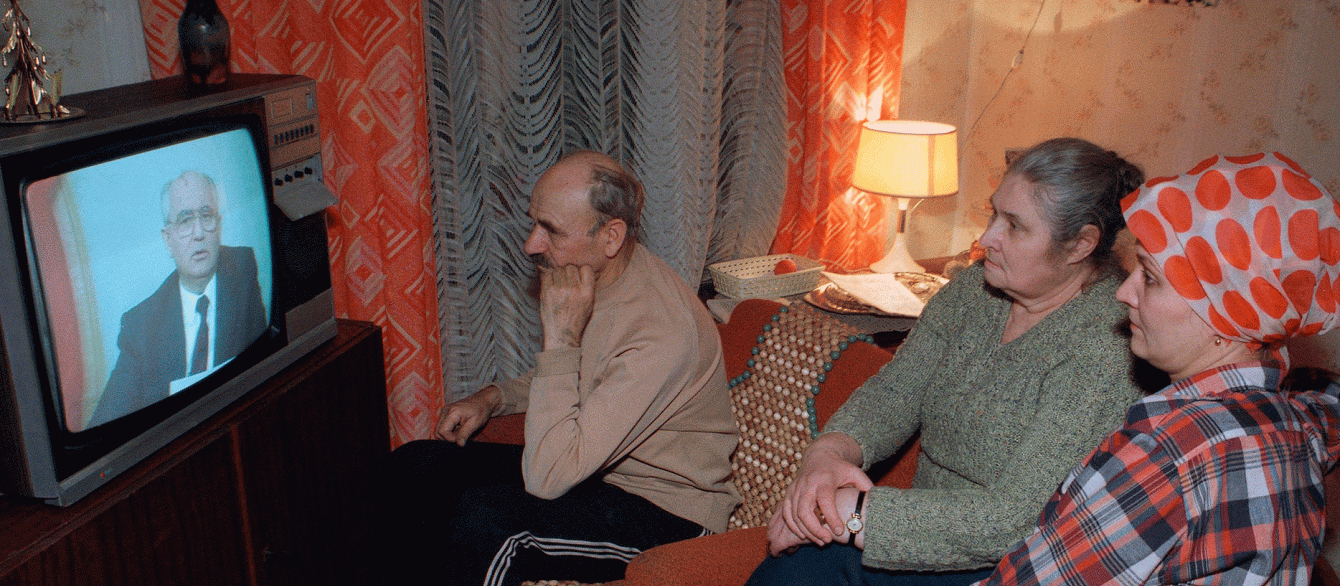
A family watches Soviet President Mikhail Gorbachev's resignation speech on Soviet television in their downtown Moscow apartment, Wednesday, Dec. 25, 1991.
U.S.-Soviet relations throughout this period remained tense. By the time Reagan’s first term as U.S. president ended in January 1985, he had not been able to meet with any of the three men who had headed the CPSU during that time. The outlook overall for the Soviet bloc and the Cold War at the start of Reagan’s second term appeared bleak.
Transformation of the USSR and Soviet Foreign Policy
Yet, just a few years later, the Cold War ended, and by late December 1991 the Soviet Union had disappeared as well. The world of December 1981, which had seemed so disheartening for supporters of human rights, democracy, and freedom, had changed fundamentally for the better within just a decade.
This astounding transformation in the latter half of the 1980s and early 1990s began in March 1985, when Chernenko died and was replaced by Mikhail Gorbachev, who had just barely edged out one of Brezhnev’s closest acolytes, Viktor Grishin, for the top party job. Gorbachev’s policies during his first two years in office departed relatively little from orthodox measures and were modest in achievements, but already during this early period it was clear that the new Soviet leader wanted to inject greater dynamism into Soviet politics, to revitalize the Soviet economy, and to strengthen his country’s role as a global superpower. In November 1985, he met with Reagan in Geneva, the first time U.S. and Soviet leaders had convened since Brezhnev and Jimmy Carter held a summit in Vienna in June 1979.
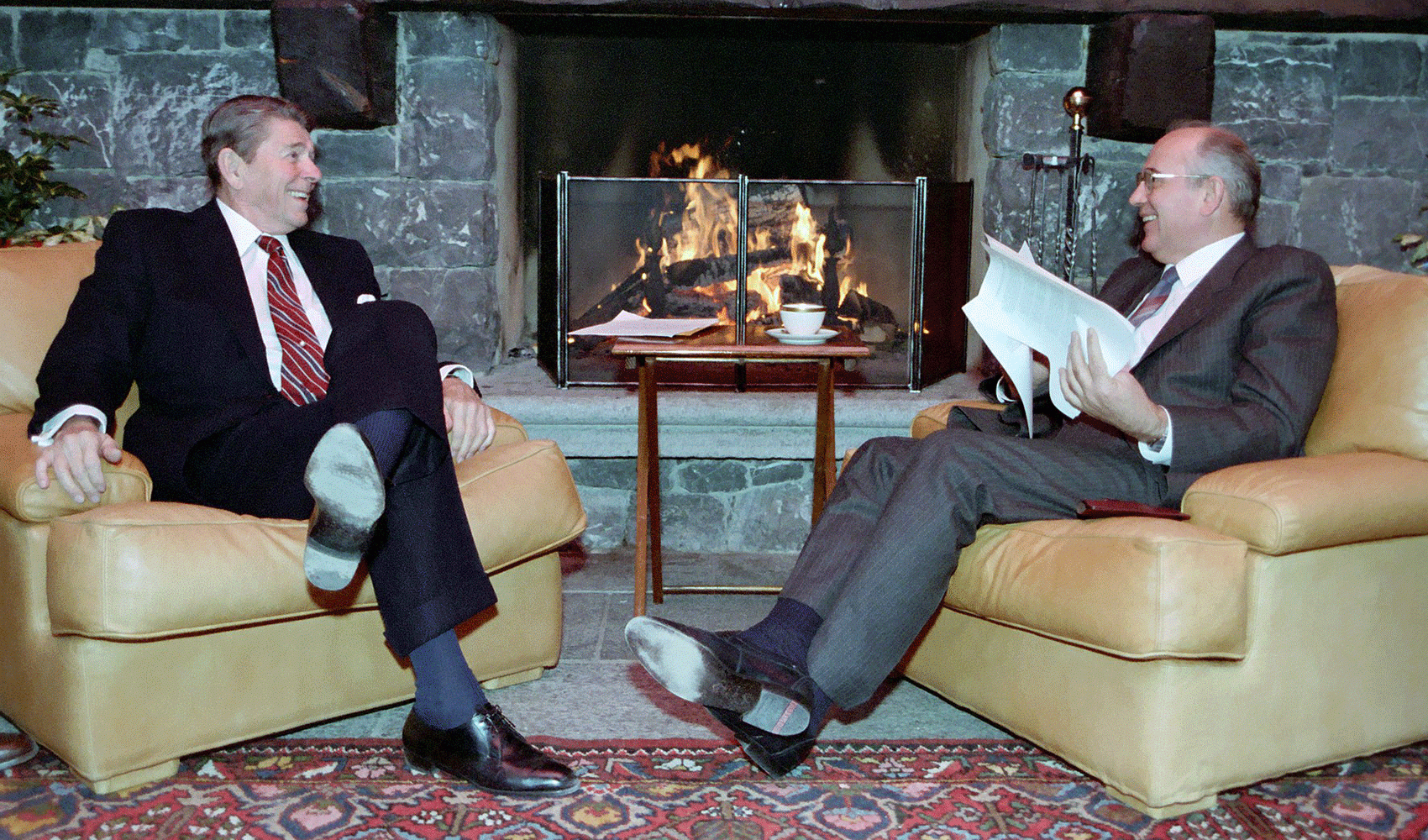
U.S. President Ronald Reagan and Soviet General Secretary Mikhail Gorbachev at the Geneva Summit on November 19, 1985.
Although Gorbachev’s initial policy agenda was not oriented toward radical change, he soon came to believe that unless he embarked on a much more far-reaching set of political and economic reforms he would run up against many of the same obstacles that had thwarted earlier attempts to reinvigorate the Soviet economy and enhance the Soviet Union’s global position. He set aside his policies of uskorenie (acceleration) and shifted to a much bolder program of perestroika (restructuring) and glasnost (official openness). By the latter half of 1988 and 1989, Gorbachev embraced a truly radical agenda, transforming the Soviet Union in a remarkably short time. Competitive elections, public protest movements, free-wheeling discussions in the mass media, ethnic assertiveness, and other features of political life that had been strictly forbidden in the USSR under previous leaders suddenly became de rigueur in the Gorbachev era.
In addition to transforming the Soviet polity and setting it on the course of democratization, Gorbachev undertook dramatic changes in Soviet foreign policy. Having concluded that a highly militarized approach to foreign policy would be incompatible with the ambitious reforms he wanted to adopt at home, he sought to overcome the Cold War. Gorbachev met several times more with Reagan and with Reagan’s successor, George H. W. Bush, and signed far-reaching nuclear arms control treaties. Nuclear arsenals were reduced, and the Cold War rapidly abated.
Even more important, Gorbachev persuaded the CPSU Politburo to adopt a radically new approach toward the East European countries, forswearing the role the Soviet Union had long played in upholding Communist dictatorships in the region. In March 1989 the Soviet Politburo secretly decided it would no longer use force to maintain Communist rule in Eastern Europe. In subsequent months, this decision was put to the test, and in each case the Soviet authorities accepted the downfall of Communist regimes. The peaceful end of Communist rule in Eastern Europe—apart from the violent overthrow of Nicolae Ceaușescu’s regime in Romania—seemed wholly unrealistic when Gorbachev took office, but his decision to embrace fundamental changes in Soviet foreign policy allowed this once-implausible scenario to materialize. With the disappearance of Soviet-backed Communist regimes in Eastern Europe came the end of the division of Europe, and this in turn brought an end to the Cold War. Within just four years, the new Soviet leader achieved the remarkable feat of ushering in transformative, peaceful change for the better.
Gorbachev Runs into Trouble
Despite all of Gorbachev’s achievements both at home and abroad, the forces he unleashed within the Soviet Union increasingly eluded his control. Political rivals outside the CPSU, who could take advantage of the greatly expanded political opportunity structure under Gorbachev, moved ahead in pursuit of their own objectives and thereby complicated the central authorities’ efforts to keep the Soviet Union together. The onset of a severe economic crisis in the Soviet Union in 1990–1991—a crisis that resulted from Gorbachev’s own policies and from a sharp drop in global oil prices that deprived the USSR of much-needed hard-currency revenue — caused a further deterioration of the central authorities’ control.
The political fissures that increasingly came to the fore in 1991 inspired an attempt by hardliners in Moscow to launch a coup in August 1991, but the attempt proved abortive. The rapid collapse of the attempted coup severely enervated all of the longstanding Soviet political institutions and largely undermined last-ditch efforts to keep the Soviet Union intact. The rebuff of the coup gave a powerful fillip to the independence movement in Ukraine, resulting in a decisive vote for independence in a referendum held on 1 December 1991. The push for independence in Ukraine caused the president of the Russian Republic, Boris Yeltsin, to realize it was no longer tenable to preserve a union, and he arranged a meeting with his Ukrainian and Belarusian counterparts in Belovezhskaya Pushcha on 7–8 December 1991 to sign accords dissolving the Soviet Union. Until then, Gorbachev had still been hoping he could maintain a Soviet state, but in the aftermath of the Belovezhskaya Pushcha meeting and another meeting in Kazakhstan two weeks later that officially set up the Commonwealth of Independent States, Gorbachev faced up to reality. He resigned all his offices on 25 December 1991, and the next day the Supreme Soviet of the USSR formally approved the dissolution of the country, bringing an end to the state the Bolsheviks had created after coming to power in November 1917.
The End of the USSR in Retrospect
Looking back at these events from the perspective of 30 years, we cannot really compare the extraordinary process of change in the USSR, in Eastern Europe, and in the Cold War in 1985-1991 with anything that has happened since 1991. The inauspicious outlook after the martial-law crackdown in Poland in December 1981 conveyed a sense of permanence about the Cold War and about the future of Communist autocracies. But just a decade later the situation had been totally altered. Gorbachev deserves most of the credit (or blame, depending on one’s point of view) for this transformation, but others, including Reagan, Bush, and British Prime Minister Margaret Thatcher, also played important roles.
In the years since the end of the Cold War and the dissolution of the Soviet Union, most of the former Soviet republics have either remained under authoritarian rule or reverted to it. The Russian Federation briefly embarked on democratization, but movement in that direction petered out in the early 1990s. Since then, Russia has experienced upheavals, wars, unrest, and a return to autocracy under Vladimir Putin. Many Russians nowadays look back nostalgically on the Soviet past, conveniently glossing over the repression, lack of freedom, and miserable standards of living. Putin himself has spoken proudly about his sixteen years of work for the KGB and has lamented the demise of the Soviet Union as “the greatest geopolitical catastrophe of the [20th] century”—a jarring assessment, to say the least.
Looking back at these events from the perspective of 30 years, we cannot really compare the extraordinary process of change in the USSR, in Eastern Europe, and in the Cold War in 1985-1991 with anything that has happened since 1991.
In the West, memories of the Soviet era are far more sober, devoid of nostalgia about a mythical past. In North America and Europe, commemorations of the 30th anniversary of the end of the Soviet Union have highlighted the tyranny that preceded Gorbachev’s rise to power. In Russia the favorability ratings for Gorbachev are extremely low, but in the West he is widely (and appropriately) admired. Many events in Western countries marking the thirtieth anniversary of the end of the Soviet Union have depicted him as a great leader. At some point in Russia, after a few more generations have passed and Putin is no longer on the scene, Gorbachev might finally earn a more favorable reputation for having brought freedom to the USSR. After 1991, attempts to develop full-fledged democracy in the Russian Federation did not pan out, but that was certainly not Gorbachev’s fault.
The final decade of the Cold War, starting with martial law in Poland and ending with the dissolution of the Soviet Union, is worth bearing in mind today and in the future. Over the past three decades, the United States and its allies in Europe and Asia have experienced numerous setbacks and disappointments. The challenges and threats of the 21st century have been daunting and are likely to remain so. Nonetheless, a review of the decade from December 1981 to December 1991 reminds us that even when events and problems come along that seem dire and insoluble, circumstances can improve more rapidly than we expect. Both now and in the future, we should always be on the lookout for opportunities to remedy exigent problems and to change the world for the better.

